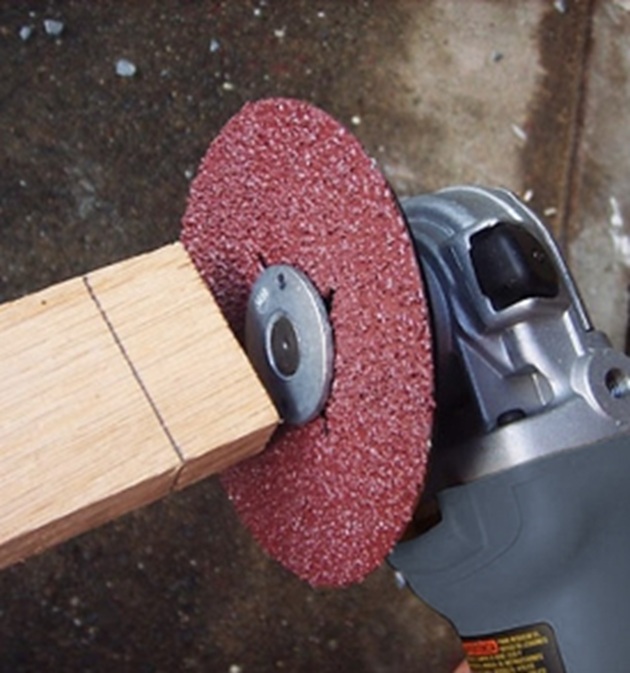Discover How to Choose a Sanding Disc for Your Grinder
The Essential Role of Abrasive Tools
The grinders’ sanding discs are fundamental tools essential for a broad spectrum of grinding, sanding, and finishing tasks. Whether you’re a professional tradesperson or a hobbyist, the right disc can transform how efficiently and effectively you work on various materials like wood, metal, or painted surfaces.
These sanding discs provide the abrasive surface needed to shape, smooth, or remove excess material, contributing to quality finishes on construction sites, workshops, or DIY projects. With different types and specifications available, understanding their roles helps you select an optimal disc suitable for your project, saving time and frustration.
Exploring Sanding Disc for Grinder Options and Making the Right Choice

When it comes to selecting a sanding disc for grinder applications, there are numerous options designed for specific tasks and materials. Fibre discs, with rigid paper or cloth backing, offer excellent performance on flat surfaces, ideal for material removal and surface preparation.
Alternatively, flap discs consist of overlapping abrasive flaps arranged radially, creating a tool that combines grinding and finishing capabilities, especially useful on curved or uneven surfaces. Grit size is one of the most important factors influencing sanding disc performance. Coarse grits in the 40-60 range are perfect for rapid material removal, paint stripping, or rust removal.
Medium grits (80-120) prepare surfaces for further finishing, while fine grits (180 and above) produce smoother finishes suitable for painting or polishing. Also key is the abrasive grain type: aluminium oxide discs are versatile and cost-effective, zirconia alumina excels in heavy-duty metalworking with excellent durability, and ceramic abrasives offer superior longevity and high cutting power in industrial conditions.
Backing materials vary between fibre, cloth, and sometimes composite layers, influencing flexibility, tear resistance, and lifespan. Fibre offers firmness suitable for precision grinding, while cloth backings provide greater flexibility for sanding contours. Choosing the right size and disc speed rating compatible with your grinder ensures safety and optimum results.
Across all these options, selecting the proper sanding disc for grinder tasks enhances your project outcomes while extending both disc and tool life. Investing in the right sanding disc for grinder setup will boost your productivity, enhance safety, and ensure exceptional finish quality for projects ranging from metal fabrication to fine woodworking.
Materials and Design Features That Make a Real Difference
Understanding what goes into a sanding disc helps in making informed decisions. Aluminium oxide abrasive grains dominate because of their excellent combination of hardness and toughness, making them perfect for wood and metal surfaces.
Zirconia alumina grains provide a self-sharpening effect; as grains wear, new sharp grains are exposed, boosting efficiency particularly in heavy grinding. Ceramic abrasives represent the top-tier choice with their densely packed grains, offering rapid cutting and exceptional resistance to heat and wear, which is invaluable in professional or continuous operation settings.
Backing materials play a crucial role in disc performance and durability. Fibre backing offers a firm surface suitable for flat sanding jobs that require consistent pressure distribution. Cloth backing discs add flexibility and are better for uneven surfaces and detailed work. Some advanced discs combine multiple layers for enhanced durability, impact resistance, and better user comfort during extended sanding sessions.
The choice of grit and backing collectively ensure gradual sanding with less clogging and consistent results. Starting with coarse discs and progressing to finer grits allows for efficient material removal followed by a high-quality finish. Knowing these technical details regarding materials and design ensures compatibility with your grinder and the quality of the final finish.
Tips for Using Abrasive Discs Effectively
Choosing the right sanding wheels is more than picking grit size; it includes understanding material types, backing, and disc compatibility. Beginners are advised to start with medium grit discs to avoid excessive material removal and move progressively to finer grits for finishing. Ensuring discs are correctly mounted and match grinder specifications is vital for safety and performance.
Proper sanding technique involves applying steady, moderate pressure and allowing the disc to do the work without forcing it. This approach extends disc life and results in an even finish. Complementary abrasives such as flap discs add versatility by combining grinding and finishing in one tool, beneficial for complex surfaces.
Maintaining discs through regular inspection, cleaning, and timely replacement prevents hazards and guarantees quality sanding. Also, wearing appropriate safety gear like eye protection, gloves, and masks is essential to protect from dust and debris.
Versatile Applications and Benefits Across Materials and Tasks
These discs are widely utilised in industries and home workshops for metal fabrication, woodworking, automotive repair, and renovation. Metalworkers often use them to remove rust, prepare surfaces for welding, smooth weld beads, and strip paints or coatings.
Woodworkers rely discs to remove rough edges, smooth joints, and prepare surfaces for sealing or varnishing. The versatility extends further to plastics and composites, where precise finishing is required without damaging delicate surfaces.
The correct sanding disc for grinder improves safety by reducing the time and effort required for sanding and grinding operations. It also decreases user fatigue while ensuring consistent surface quality. Using discs designed for grinders balances ease of use, cutting efficiency, and durability. These discs perform well across many materials, making them essential in any sanding or grinding toolkit.
The Foundation for Quality Craftsmanship
Selecting the perfect sanding disc for your grinder and understanding its materials, grit, and backing ensures smooth, efficient work on diverse materials. The investment in high-quality discs paired with proper use tips solidifies both the safety and outcome of your projects. By applying knowledge about abrasive types, grit progression, and sanding techniques, users can meet and exceed project demands with confidence.
Mastery in sanding doesn’t just result in better finishes; it also protects tools and workers alike, enhancing both productivity and satisfaction. Embracing informed choices in sanding discs lays a foundation for quality craftsmanship across any metal, wood, or composite surface treatment.